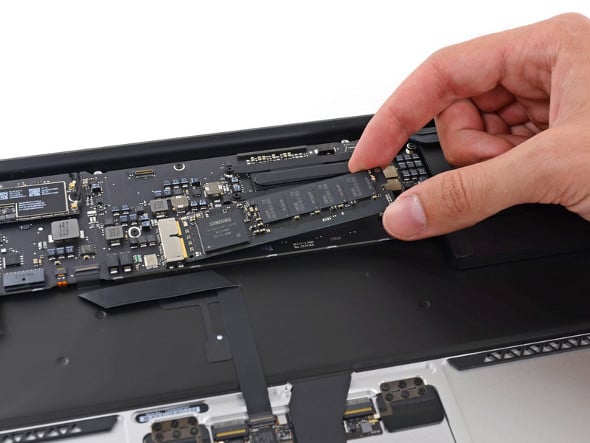Apple Breaks New Ground Again with PCI Express SSD Storage In New Mac Pro and MacBook Air
We’ve been critical of Apple recently for being frustratingly stagnant in terms of innovation (at least with handsets), and while it’s still debatable whether the iOS 7 and Mac OS X Maverick updates are worth getting excited about, Apple’s forthcoming Mac Pro certainly piques our collective interest; it portends some of that industrial design meets superb engineering, meets high-end features flair that we haven’t seen from Apple much lately.
There’s of course the obvious fact that the Mac Pro is built as a cylinder with all the components facing inward as opposed to the big rectangular box style of most computer chassis. Presumably, this facilitates heat dissipation (we’ll need to get this cylindrical wonder tested out ourselves before we can believe that for sure), but in any case, it’s a clever way to pack a lot of powerful components into a small space.

Apple Mac Pro
Among the other extremely high-end components in the Mac Pro, including the 12-core Intel Xeon processor and dual AMD FirePro GPUs, there’s one that stands out: the machine’s PCIe-attached flash storage.

MacBook Air with PCIe-attached storage (Image credit: iFixit--egads, they're quick on the draw)
PCIe-attached storage is so much more robust because it’s a runs on a "native" interface and offers direct-attached performance. Most SSDs rely on a bridged interface such as SATA or SAS, which pose a performance bottleneck for the actual storage media since signals have to be translated from SATA to PCI Express and back again. With PCIe, that bottleneck is no longer such a limiting factor. (It’s hard to imagine just how much this beautiful machine is going to cost by the way.) Apple also has PCIe-attached SSDs in the Macbook Airs it just announced.
Performance-enhancing features like PCIe-attached storage is the kind of real innovation and strong design chops that Apple needs to get its groove back. Cheers to the Cupertino crew on this one and we challenge others to take note and possibly a page or two from Apple's playbook.
There’s of course the obvious fact that the Mac Pro is built as a cylinder with all the components facing inward as opposed to the big rectangular box style of most computer chassis. Presumably, this facilitates heat dissipation (we’ll need to get this cylindrical wonder tested out ourselves before we can believe that for sure), but in any case, it’s a clever way to pack a lot of powerful components into a small space.

Apple Mac Pro
Among the other extremely high-end components in the Mac Pro, including the 12-core Intel Xeon processor and dual AMD FirePro GPUs, there’s one that stands out: the machine’s PCIe-attached flash storage.

MacBook Air with PCIe-attached storage (Image credit: iFixit--egads, they're quick on the draw)
PCIe-attached storage is so much more robust because it’s a runs on a "native" interface and offers direct-attached performance. Most SSDs rely on a bridged interface such as SATA or SAS, which pose a performance bottleneck for the actual storage media since signals have to be translated from SATA to PCI Express and back again. With PCIe, that bottleneck is no longer such a limiting factor. (It’s hard to imagine just how much this beautiful machine is going to cost by the way.) Apple also has PCIe-attached SSDs in the Macbook Airs it just announced.
Performance-enhancing features like PCIe-attached storage is the kind of real innovation and strong design chops that Apple needs to get its groove back. Cheers to the Cupertino crew on this one and we challenge others to take note and possibly a page or two from Apple's playbook.

